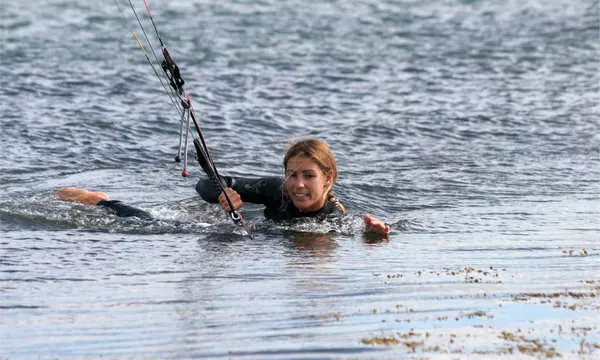Kiteboarding, an exhilarating fusion of wind power and board skills, has gained widespread popularity among adventure seekers worldwide. Whether you’re a novice or a seasoned enthusiast, mastering essential techniques is crucial for a safe and enjoyable experience on the water. Among these techniques, body dragging stands out as a fundamental skill that every kiteboarder must learn. Serving as both a means of self-rescue and a method for retrieving a lost board, body dragging is indispensable in the kiteboarding repertoire. In this comprehensive guide, we will delve into the intricacies of body dragging, exploring its importance, techniques, and advanced tips to help you navigate the waters with confidence and finesse.
Understanding the Importance of Body Dragging
Body dragging is a technique used in kiteboarding to move through the water without a board while being powered by the kite. It serves multiple purposes, making it an essential skill for kiteboarders of all levels. Firstly, body dragging is a crucial component of self-rescue maneuvers. In the event of a kite malfunction or a sudden loss of board, being proficient in body dragging can enable riders to safely navigate back to shore or retrieve their equipment without assistance. Moreover, body dragging allows kiteboarders to explore new areas of the water, fine-tune their kite control skills, and practice maneuvers such as upwind and downwind dragging.
Mastering the Basics: Body Dragging Techniques
To perform a successful body drag, one must first master the fundamental techniques of kite control and body positioning. Here’s a step-by-step guide to help you get started:
1. Preparation: Before attempting a body drag, ensure that you are proficient in flying the kite in a controlled manner. Familiarize yourself with the kite’s power zone and practice generating power by steering the kite through the wind window.
2. Launch and Initial Positioning: Begin by launching the kite from the water, either with the help of an assistant or by self-launching if conditions permit. Position yourself with the kite at 12 o’clock, directly overhead.
3. Body Position: Adopt a horizontal body position with your arms extended and legs relaxed. Keep your body parallel to the water’s surface to minimize drag and maintain stability.
4. Initiate Drag: To start moving through the water, steer the kite slightly downwind by pulling on the control bar with one hand while releasing tension with the other. This will generate forward momentum, propelling you through the water.
5. Control and Direction: Use subtle adjustments in kite steering to control your speed and direction. To move upwind, steer the kite slightly higher into the wind window, while steering lower will result in a downwind trajectory.
6. Maintain Awareness: Stay vigilant of your surroundings, including other kiteboarders, obstacles, and changing wind conditions. Constantly assess your position relative to the wind direction and adjust your kite accordingly to maintain control.
7. Practice Makes Perfect: Like any skill in kiteboarding, mastering body dragging requires practice and perseverance. Start in light wind conditions and gradually progress to stronger winds as you gain confidence and proficiency.
Advanced Tips for Enhanced Performance
Once you’ve mastered the basics of body dragging, you can further refine your technique and explore advanced variations. Here are some tips to help you take your body dragging skills to the next level:
1. Experiment with Different Kite Positions: While the standard body drag is performed with the kite positioned at 12 o’clock, experimenting with different kite positions can enhance your versatility and control. Try body dragging with the kite at various angles within the wind window to understand how it affects your speed and direction.
2. Practice One-Handed Control: As you become more comfortable with body dragging, challenge yourself by practicing one-handed kite control. This will free up one hand to perform other tasks, such as adjusting your harness or signaling to other riders.
3. Explore Rescue Scenarios: Use body dragging as an opportunity to simulate rescue scenarios and practice assisting other riders in distress. Familiarize yourself with techniques for towing or supporting a fellow kiteboarder while maintaining control of your own kite.
4. Refine Upwind Dragging: Mastering the ability to body drag upwind is essential for returning to your starting point or reaching a specific destination. Focus on fine-tuning your kite control and body positioning to maximize efficiency and minimize drift.
5. Utilize Visual Cues: Pay attention to visual cues such as wind ripples, wave patterns, and landmarks to gauge your progress and adjust your trajectory accordingly. Learning to read the water will enhance your ability to navigate effectively and anticipate changes in wind direction.
Conclusion
Body dragging is a foundational skill that every kiteboarder must master to ensure safety, confidence, and enjoyment on the water. By understanding the principles of kite control, body positioning, and maneuvering, you can harness the power of the wind to propel yourself through the water with finesse and precision. Whether you’re practicing self-rescue techniques or exploring new areas of the water, body dragging opens up a world of possibilities for adventure and progression in kiteboarding. So, grab your kite, hit the water, and embark on the exhilarating journey of mastering the art of body dragging.

